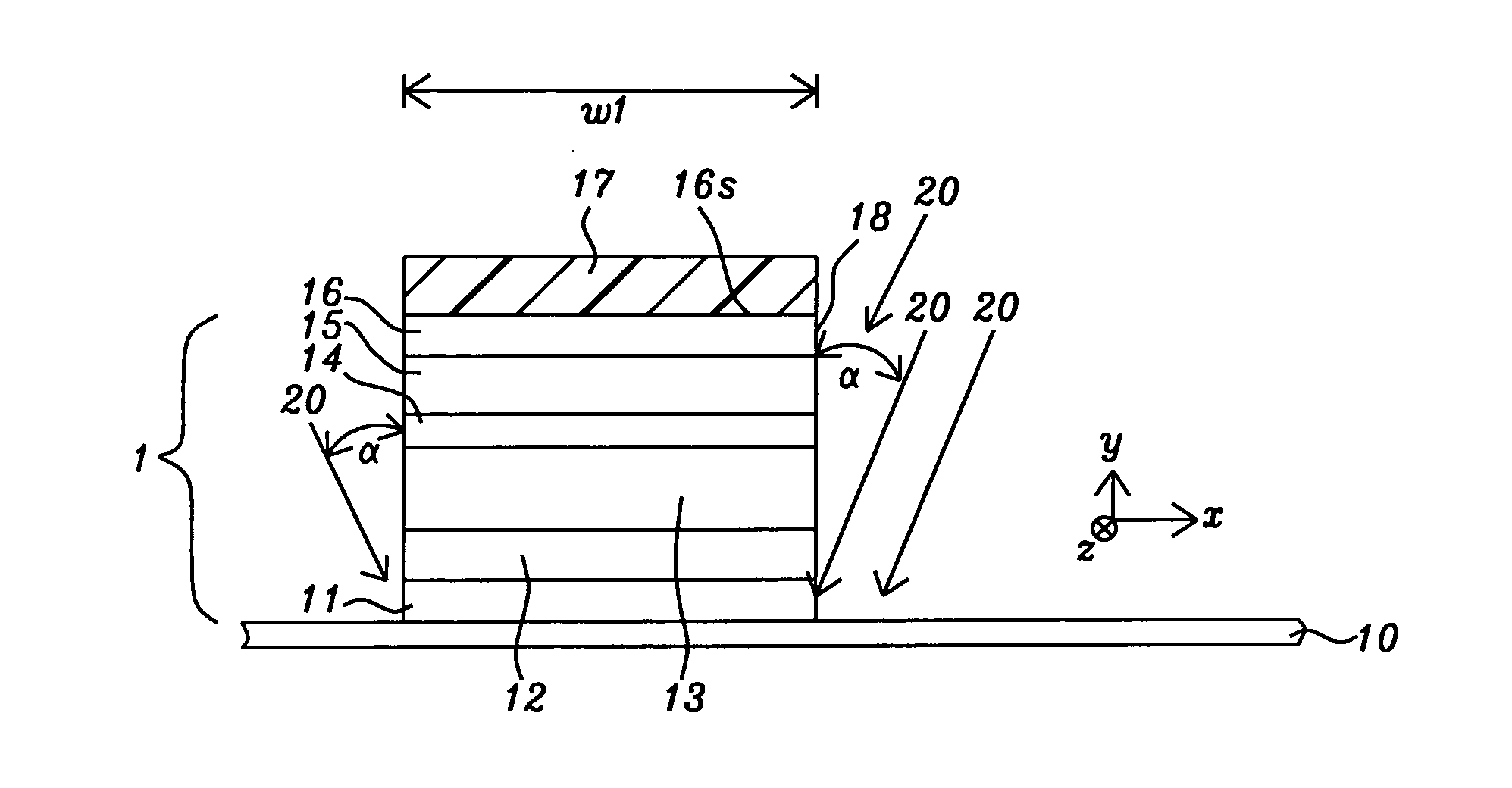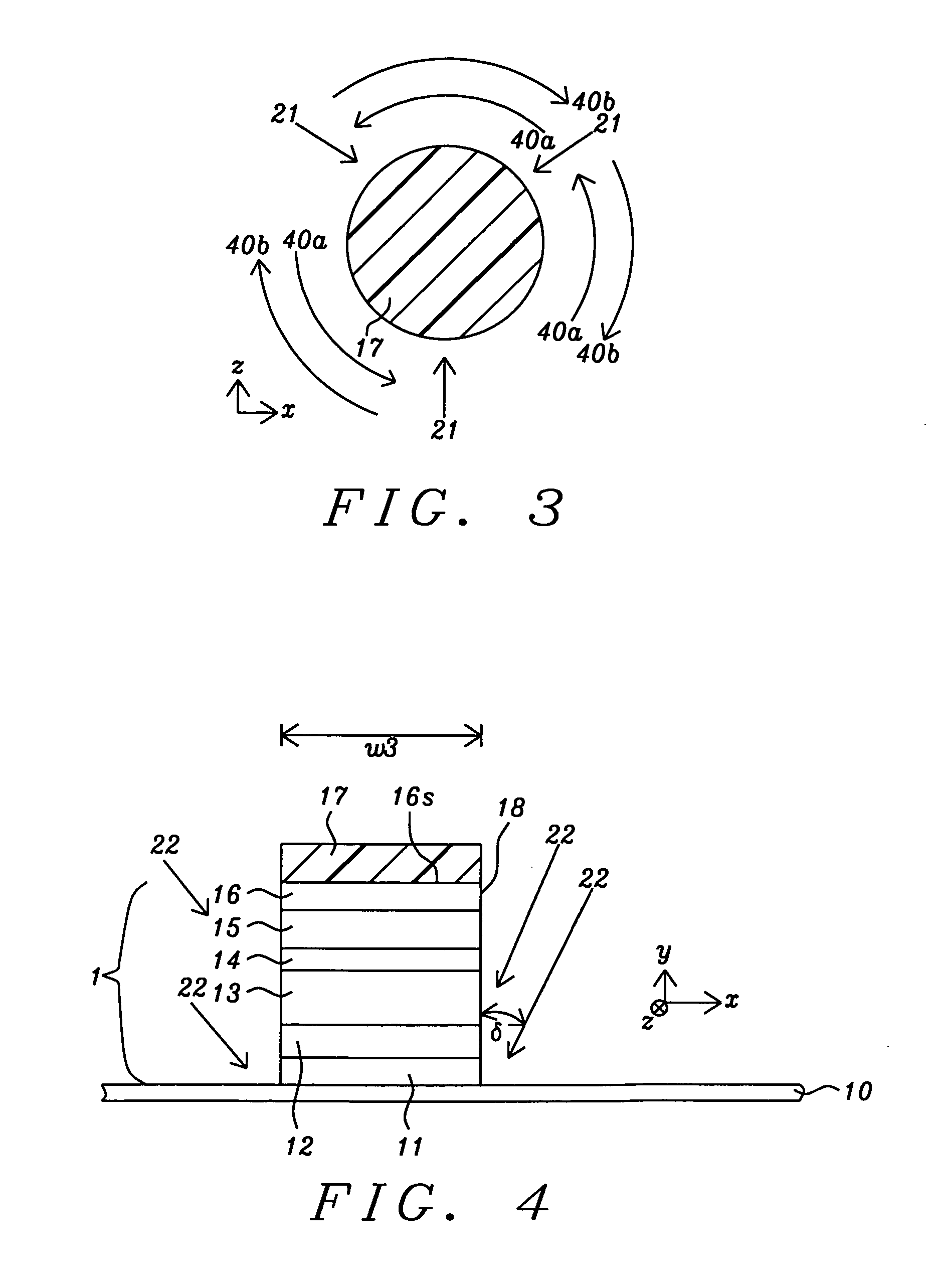Method to fabricate small dimension devices for magnetic recording applications
- Summary
- Abstract
- Description
- Claims
- Application Information
AI Technical Summary
Benefits of technology
Problems solved by technology
Method used
Image
Examples
example 1
[0037]In order to demonstrate the benefits of the multiple step IBE sequence of the present invention, a TMR sensor was fabricated according to a method previously practiced by the inventors, and according to an embodiment as described herein. For each of the wafers 1, 2, and 3, a bottom spin valve configuration was formed on a AlTiC substrate and is represented by Ru / Ta / IrMn / CoFe / Ru / CoFeB / MgO / CoFeB / Ru / Ta where Ru / Ta is the seed layer, IrMn is the AFM layer, CoFe / Ru / CoFeB is the pinned layer, MgO is a tunnel barrier layer, CoFeB is the free layer, and Ru / Ta is a composite capping layer. Data was collected for circular shaped devices as described below.
[0038]Wafer 3 is a reference sample that is a sensor made by a prior art method in which the FLW formed after pattern transfer through the sensor stack of layers is trimmed with a single IBE step comprising an incident angle of 8 degrees with respect to a plane formed perpendicular to the substrate. As shown in Table 1, the sensor on w...
PUM
| Property | Measurement | Unit |
|---|---|---|
| Fraction | aaaaa | aaaaa |
| Fraction | aaaaa | aaaaa |
| Fraction | aaaaa | aaaaa |
Abstract
Description
Claims
Application Information
 Login to View More
Login to View More - R&D
- Intellectual Property
- Life Sciences
- Materials
- Tech Scout
- Unparalleled Data Quality
- Higher Quality Content
- 60% Fewer Hallucinations
Browse by: Latest US Patents, China's latest patents, Technical Efficacy Thesaurus, Application Domain, Technology Topic, Popular Technical Reports.
© 2025 PatSnap. All rights reserved.Legal|Privacy policy|Modern Slavery Act Transparency Statement|Sitemap|About US| Contact US: help@patsnap.com



